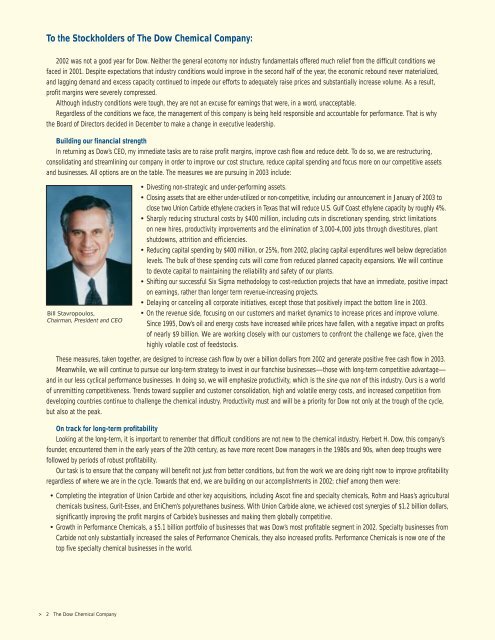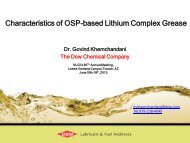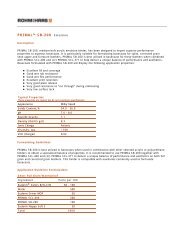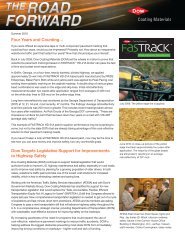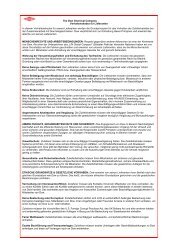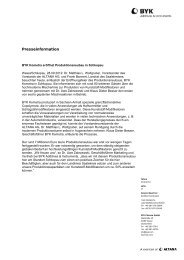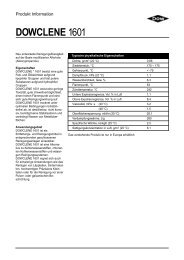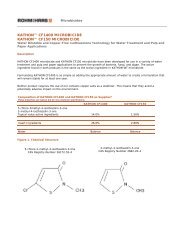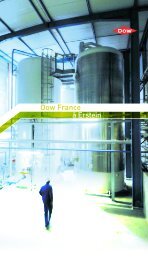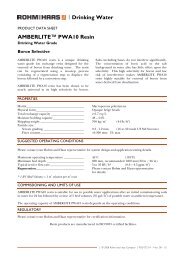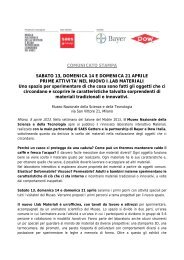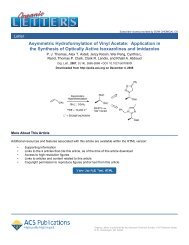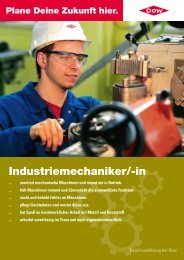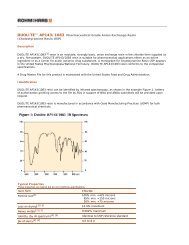Focus - The Dow Chemical Company
Focus - The Dow Chemical Company
Focus - The Dow Chemical Company
Create successful ePaper yourself
Turn your PDF publications into a flip-book with our unique Google optimized e-Paper software.
To the Stockholders of <strong>The</strong> <strong>Dow</strong> <strong>Chemical</strong> <strong>Company</strong>:<br />
2002 was not a good year for <strong>Dow</strong>. Neither the general economy nor industry fundamentals offered much relief from the difficult conditions we<br />
faced in 2001. Despite expectations that industry conditions would improve in the second half of the year, the economic rebound never materialized,<br />
and lagging demand and excess capacity continued to impede our efforts to adequately raise prices and substantially increase volume. As a result,<br />
profit margins were severely compressed.<br />
Although industry conditions were tough, they are not an excuse for earnings that were, in a word, unacceptable.<br />
Regardless of the conditions we face, the management of this company is being held responsible and accountable for performance. That is why<br />
the Board of Directors decided in December to make a change in executive leadership.<br />
Building our financial strength<br />
In returning as <strong>Dow</strong>’s CEO, my immediate tasks are to raise profit margins, improve cash flow and reduce debt. To do so, we are restructuring,<br />
consolidating and streamlining our company in order to improve our cost structure, reduce capital spending and focus more on our competitive assets<br />
and businesses. All options are on the table. <strong>The</strong> measures we are pursuing in 2003 include:<br />
Bill Stavropoulos,<br />
Chairman, President and CEO<br />
> 2 <strong>The</strong> <strong>Dow</strong> <strong>Chemical</strong> <strong>Company</strong><br />
•Divesting non-strategic and under-performing assets.<br />
• Closing assets that are either under-utilized or non-competitive, including our announcement in January of 2003 to<br />
close two Union Carbide ethylene crackers in Texas that will reduce U.S. Gulf Coast ethylene capacity by roughly 4%.<br />
•Sharply reducing structural costs by $400 million, including cuts in discretionary spending, strict limitations<br />
on new hires, productivity improvements and the elimination of 3,000-4,000 jobs through divestitures, plant<br />
shutdowns, attrition and efficiencies.<br />
• Reducing capital spending by $400 million, or 25%, from 2002, placing capital expenditures well below depreciation<br />
levels. <strong>The</strong> bulk of these spending cuts will come from reduced planned capacity expansions. We will continue<br />
to devote capital to maintaining the reliability and safety of our plants.<br />
• Shifting our successful Six Sigma methodology to cost-reduction projects that have an immediate, positive impact<br />
on earnings, rather than longer term revenue-increasing projects.<br />
• Delaying or canceling all corporate initiatives, except those that positively impact the bottom line in 2003.<br />
• On the revenue side, focusing on our customers and market dynamics to increase prices and improve volume.<br />
Since 1995, <strong>Dow</strong>’s oil and energy costs have increased while prices have fallen, with a negative impact on profits<br />
of nearly $9 billion. We are working closely with our customers to confront the challenge we face, given the<br />
highly volatile cost of feedstocks.<br />
<strong>The</strong>se measures, taken together, are designed to increase cash flow by over a billion dollars from 2002 and generate positive free cash flow in 2003.<br />
Meanwhile, we will continue to pursue our long-term strategy to invest in our franchise businesses—those with long-term competitive advantage—<br />
and in our less cyclical performance businesses. In doing so, we will emphasize productivity, which is the sine qua non of this industry. Ours is a world<br />
of unremitting competitiveness. Trends toward supplier and customer consolidation, high and volatile energy costs, and increased competition from<br />
developing countries continue to challenge the chemical industry. Productivity must and will be a priority for <strong>Dow</strong> not only at the trough of the cycle,<br />
but also at the peak.<br />
On track for long-term profitability<br />
Looking at the long-term, it is important to remember that difficult conditions are not new to the chemical industry. Herbert H. <strong>Dow</strong>, this company’s<br />
founder, encountered them in the early years of the 20th century, as have more recent <strong>Dow</strong> managers in the 1980s and 90s, when deep troughs were<br />
followed by periods of robust profitability.<br />
Our task is to ensure that the company will benefit not just from better conditions, but from the work we are doing right now to improve profitability<br />
regardless of where we are in the cycle. Towards that end, we are building on our accomplishments in 2002; chief among them were:<br />
• Completing the integration of Union Carbide and other key acquisitions, including Ascot fine and specialty chemicals, Rohm and Haas’s agricultural<br />
chemicals business, Gurit-Essex, and EniChem’s polyurethanes business. With Union Carbide alone, we achieved cost synergies of $1.2 billion dollars,<br />
significantly improving the profit margins of Carbide’s businesses and making them globally competitive.<br />
•Growth in Performance <strong>Chemical</strong>s, a $5.1 billion portfolio of businesses that was <strong>Dow</strong>’s most profitable segment in 2002. Specialty businesses from<br />
Carbide not only substantially increased the sales of Performance <strong>Chemical</strong>s, they also increased profits. Performance <strong>Chemical</strong>s is now one of the<br />
top five specialty chemical businesses in the world.


